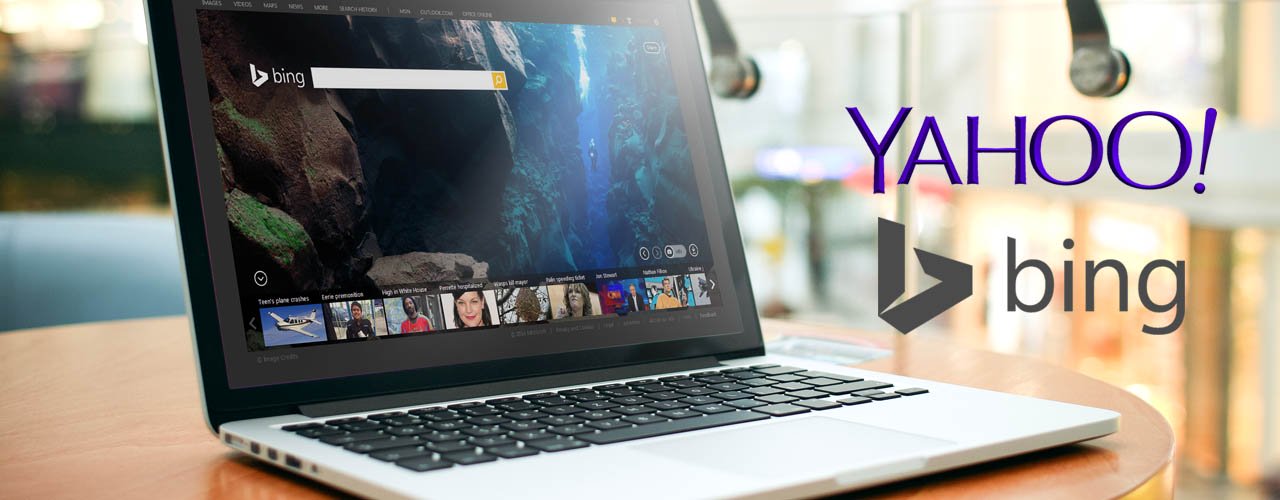What’s the Deal with Yahoo and Bing?
When it comes to search traffic, Google is the clear winner. According to comScore’s March 2014 study, their search traffic accounts for most of the market share — about 67.5%. Bing’s was admittedly lower, coming in at about 18.4%. Yahoo! follows with 10.3%.
As an advertiser, you can use these numbers to your advantage.
Let’s break it down by the number of search queries. The same comScore study found that in March of this year, Google got over 13 billion search queries. Bing had 3.6, and Yahoo! had just over 2 billion. So even though most people are looking things up using Google, there are still over 5 billion search queries happening each month on alternative search engines.
If you aren’t advertising on Yahoo! or Bing, you could be missing out on 30% of your target audience. Here’s why you should consider making Yahoo! and Bing a part of your online marketing mix.
1. It’s an investment.
According to the comScore report from earlier this year, Bing is growing. Although Yahoo! search use is slowing down just a little, the two search engines are a team, having joined forces in 2010 as an attempt to compete with Google. Bing’s push toward brand fortification and innovation is complemented by the search traffic Yahoo! generates for them, although Yahoo! does have its doubts about this relationship.
Yet if growth continues, good organic search rankings and a large impression share of PPC ads on Yahoo! and Bing will pay off for your business in the long run. If you get in early, you’ll be more successful.
2. Your people are there.
Advertising on Google is a good way to get in front of most of your target audience, but for some businesses, a larger percentage of your demographic could actually be on Yahoo! and Bing. Bing is a part of Microsoft, which means that a lot of their products sport a default setting to auto-search Bing instead of Google. For people who don’t make a conscious effort to choose Google over Bing — and yes, I mean the older generation — Bing will be the place they go when they’re looking for a product or service.
Another thing to keep in mind is the fact that Bing is pushing its advertising to the younger demographic, even going so far as to suggest that Bing’s search results trump Google’s. With their Bing It On campaign, they openly invite users to do a blind test of the two search engines and decide which comes up with the best answers. They’ve snared some traffic this way, although the campaign has received criticism from those who doubt its legitimacy. Whatever the real answer is, though, the point of SEM is to be more visible to searchers, something that advertising on Bing and Yahoo! could definitely do.
3. Cheaper cost-per-click.
Bing and Yahoo! have less people advertising on them, and since PPC ads run on a bid system, this means a lower CPC for the advertisers. Even though you’re reaching a smaller audience, you’ll be paying less to get people to your website, making this a good strategy to compliment your Adwords efforts.
How much of a savings are we talking about? On average, you could find a CPC that’s around 50-75% lower than Google’s, according to Search Engine Land’s 2013 article comparing the numbers.
4. Less competition.
Being one of a smaller advertising pool simply means that you won’t have to compete for attention on the page. This means that when someone looks up your industry — say, a plumber or other emergency service provider — the chances of them choosing you instead of your competition are higher if there are less ads on the page. A lot of businesses in competitive industries actually see more results with Yahoo! and Bing.
5. Diversify, Diversify, Diversify.
You can use all three search engines with little extra effort. With PPC ads, diversification is as simple as switching around your budget and working with a PPC management company who knows all strategies well and can juggle marketing on multiple search engines.
It’s also pretty easy to optimize your SEO strategies for Yahoo! and Bing because you can optimize for both simultaneously. The specifications for Yahoo! and Bing pagerank are different than Google, but not hard to accomodate. The things that these alternative search engines look for when ranking websites does indeed appear to be more alternative: they favor establishment and credibility, searching for hard facts, while Google takes information that is socially related into account as well.
In their organic listings they often show .edu and .gov websites highest, while in their local results they show more small businesses because they use proximity as their weighing mechanism. Another interesting differentiator is that they use your social media to show you if any of your friends responded to any of the articles in the search results previously.
Diversification with advertising is never a bad thing, especially if you have the budget to try it out. Keep an eye on your results and see which is giving you the highest return on your dollar. And if you haven’t looked already, take a look through Yahoo! and Bing search results for your business to assess your rankings. You might be surprised at what you find.

Logical Position, an Inc. 500 digital agency supporting 5,000+ clients across North America. LP is the proud recipient of Google’s Lead Generation Premier Partner of the Year and Microsoft's Global Channel Partner of the Year 2024! The award-winning agency offers full-service PPC management, SEO, Paid Social, Amazon and Creative Services for businesses large and small. As a Google Premier Partner, Microsoft Elite Partner & Meta Business Partner, LP is in the top 1% of ad spend managed across platforms.



